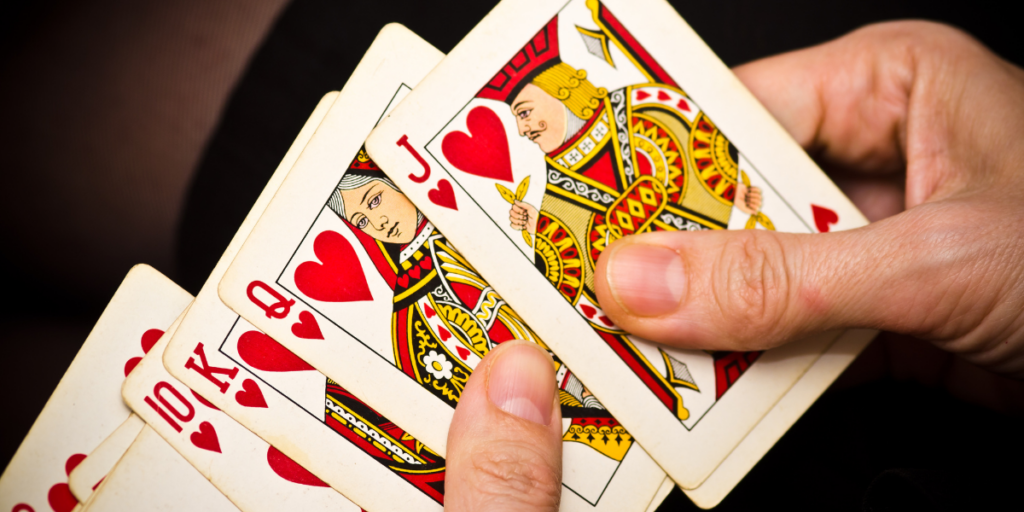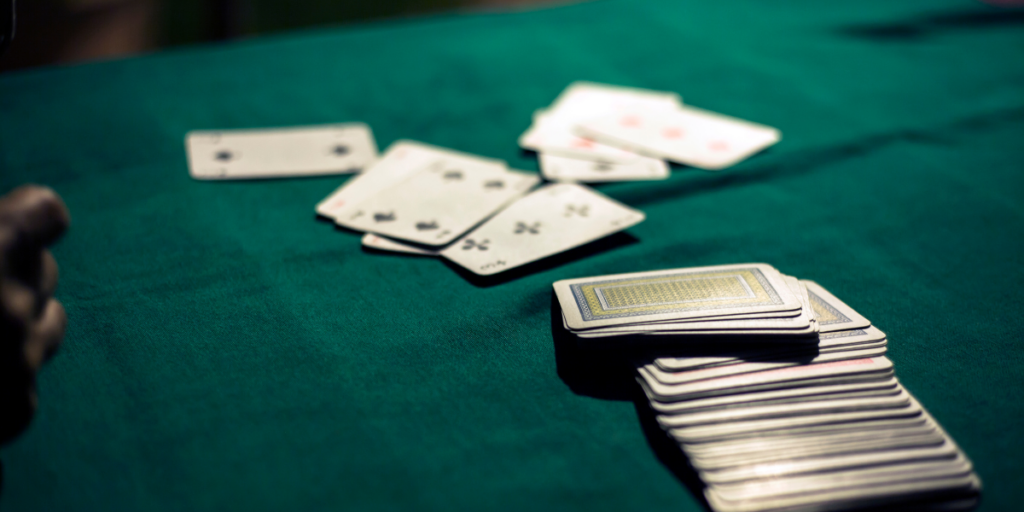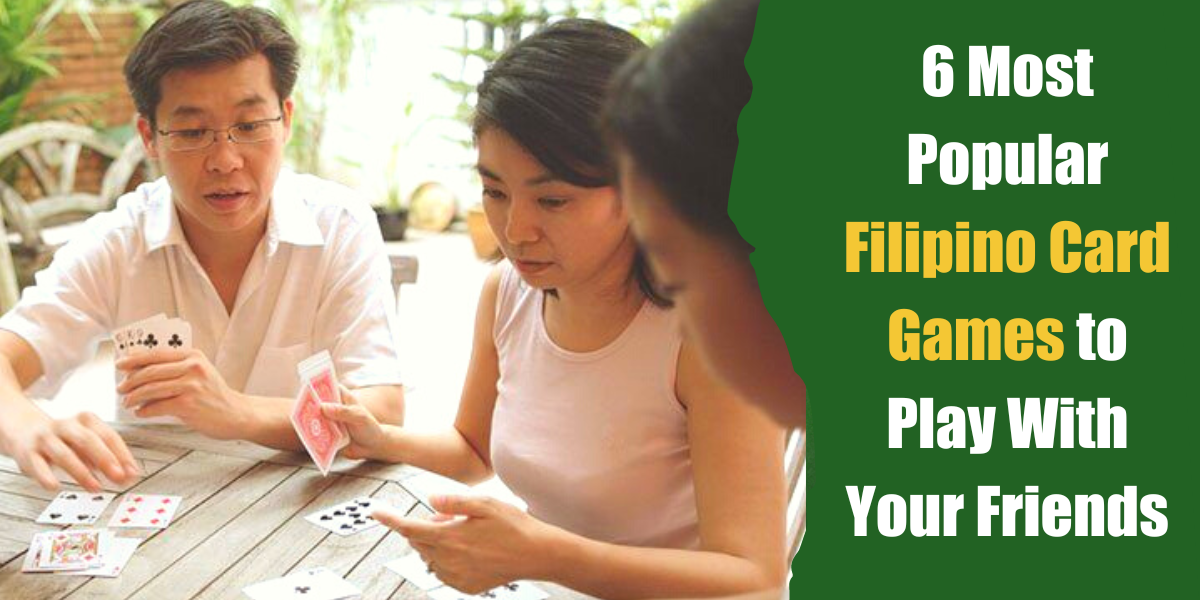The Philippines are a collection of Islands right off the coast of Vietnam. During a recent trip, I had the privilege of staying in the center of the Philippines.
While there, I decided I wanted to learn as much about Filipino culture as possible. Being such a lover of games (card games in particular), I made that one of my main priorities to learn about and enjoy the splendid cuisine and architecture. This is how I came about putting together this list of the most popular Filipino card games.
One of the first things I learned is that Filipino card games mainly stem from Chinese traditions. Some of which have been influenced by European and American gaming styles.
The thing I loved the most about learning about Filipino card games is that I came across so many games I had never heard of, which are unique to the Philippines.
Filipino Card Games – What You’ll Need
To play Filipino card games, you will need a standard card deck. For some of them, you’ll need a Chinese deck or a Spanish Deck, which I know might seem like a hindrance, but you can pick them up for a low cost, and once you have them, your card gaming possibilities will be endless.
So, let me share with you the best Filipino card games.
1. Cuajo

If you’ve ever played any Rummy-type games, then you won’t find it too challenging to pick up the rules of Cuajo.
You’ll need four players split up into two teams and seated across the table from each other to play. You will also need a Spanish deck of cards to play and a way to keep score.
The game moves anticlockwise around the table and during each turn. Players can choose whether to draw a card from the discard pile, or the stockpile, before discarding a card from their hand. However, it would help if you did not discard a king.
During the game, there are two movements called secrets and purro, which can change the game’s direction.
- Purro – This occurs when a player only needs a single card to complete their hand. For example, if you have fifteen cards in your hand and all meet the required combination minus one card, then you can purro. After Purro has been called, future turns by all players must all be presented to the other players. Your purro can be canceled if a king is drawn.
- Secret – If you have four identical cards in your hand, you can opt to put them down in front of you before discarding them facedown. On the other hand, players will then have to pay you for your secret, and the cards will be applied to the combination. They can no longer be used in discards or other combinations.
To win the game, you must complete your objective to complete a winning hand. Players from the losing team will then have to make a payout to the winners. If specific criteria are met, additional payouts can be made. If you were the last person to draw from the stockpile, everyone must pay you a bonus.
2. Pusoy Dos

Pusoy is a similar adaptation of a game of poker, but with Chinese influence. However, you can use a standard deck of cards to play.
Pusoy is a much-loved game in the Philippines and is a great game to introduce to your friends and family. The thing I love the most about it is that it can go on for hours and never get dull.
Just like poker, pusoy uses card combinations that are used to help you win the game, which is as follows:
- Three Kings
- Two Pairs
- Straight
- Flush
- Full-House
- Four of a Kind
- Straight Flush
- Royal Flush
The order of suit goes as follows:
- Diamonds
- Hearts
- Spades
- Clubs
So, it would help if you aimed to be the first person to discard your hand using the required ranks.
After the dealer has given everyone their cards, whoever has the lowest card gets the game going. The next player will then get rid of a higher combination, using the same number of cards, or skip their turn.
There are multiple combinations that you can play, which are as follows:
- Single Cards – 2 is high, 3 is low
- Doubles/Two of a Kind – An equally ranked pair
- Three of a Kind – Three equally ranked cards
- Four of a Kind – Four equally ranked cards
- Five Cards – Consisting of a straight, a flush, straight flush, or a full house
You can get a better understanding of what these combinations mean with our comprehensive Irish poker guide.
The first person to rid themselves of all their cards wins the game, bringing the game to an end for all players.
The winner is awarded a point, and as you play more and more rounds, keeping a tally of your points, the person with the most points at the end of all games will be the overall winner.
3. Tong-Its
Tong-It is a slightly more complex version of the popular tonk card game. To play, you will need a regular American card deck, minus the jokers, so there is no need to invest in anything fancy or learn new card meanings. You will also need a dice, I love these color-changing transparent glitter dice, but any dice will work well.
There is some knowledge and skill needed to play this strategy card game, so you will need to be on the ball at all times and pay attention to what your opponents are doing in order to have a shot at winning.
To begin, each player is dealt twelve cards. However, the dealer gets thirteen cards, placing the rest in the center of the playing area. Each player should roll the dice to determine who will go first.
The dealer kicks off the game by placing their extra card next to the stockpile. This is the start of the discard pile. The next player can take this card if they choose not to take one from the stockpile.
Each turn means players take a card from either pile, discarding it and ensuring they have a meld. You can only take a card from the discard pile if you have said meld.
Of course, the aim is to get rid of all your cards, so when you have achieved this, you can call out “Tong-its,” and the game is immediately terminated with you as the winner.
However, if you still have your cards in hand and believe they’re low enough to win the game, you can call out “Draw” and give the other players a chance to challenge you. If you’re challenged, and someone has lower points than you, they win, and you will be labeled “burned.”
Another way you can bring the game to an end is if the stockpile runs out.
4. Solitaire

Solitaire is a widely played game worldwide, and it’s no different in the Philippines. It’s a single-player game, so you can enjoy it in your own home without needing other players, which is sometimes exactly what you want.
The idea of the game is to build combinations, or sequences, to rid yourself of all your cards. There are many solitaire variations; however, the principle is the same: build a foundation before gradually getting rid of the cards until you have an entire sequence. Sequences run from King being the highest to ace being the lowest and must be placed in order.
Fun Fact: It is believed that solitaire was first invented as a fortune-telling technique before it developed into the popular card game it is today.
If you want to learn more, you should look at my exciting guide to the five different kinds of solitaire you can learn to play in minutes. Also, check out this step-by-step guide to playing free cell solitaire, another fun variation and one of my favorites.
5. Tadhana
Have you ever played Dungeons and Dragons? Because if so, you will immediately recognize similarities between it and the Filipino card game Tadhana.
Tadhana is an ancient Filipino tabletop game with plenty of excitement, twists, and turns. It involves role-playing, with its characters and props all being related to Filipino culture and mythology. So, there are shapeshifters, magicians, witches, and other fascinating mythical beings and weapons.
The game’s rules can appear quite complex, so ensure that you familiarize yourself with the rules and read the module in depth before you begin. Once you’ve done that, you’ll see that it’s pretty straightforward.
The game is played by battling and combatting to gain points. This all depends on your cards and what skills and symbols they possess. For example, if you draw three-of-a-kind, you can deliver a critical hit.
Tadhana is the perfect game to get a feel of Filipino card games and how people within the culture used to play games hundreds of years ago. It’s also colorful and exciting and has a great insight into Filipino folklore, making it one of my favorite games from the Philippines.
6. Sagisag

Sagisag is an easy-to-learn, matching card game from the Philippines. Filipino national symbols, such as the Golden South Sea Pearl.
This is a great game to introduce to little ones due to its not-complicated method, so if you want to teach the kids about games from other cultures, this is a great place to start.
After all the cards have been evenly distributed to all players, everyone takes turns placing a card down. The card’s symbol must match that of the previously played card. If you’re unable to make a match, you can steal one at random from another player.
The first player to play down all of their cards is the winner.
Filipino Card Games – Final Thoughts
So, that’s my list of the best Filipino games. Hopefully, now that you know a bit more about them, you’ll introduce some to your future parties and game nights. Brag about your newfound knowledge of card games from the Philippines.
It’s true that upon introduction, some of these Filipino games can appear quite complex. Still, I believe that every one of them becomes very easy to understand once the rules have been clarified. Therefore, I advise thoroughly checking all the rules and guidelines before you even begin playing. Plus, this will make you appear even more of a pro when you teach your friends about them.
If you’ve found this an insightful read, you should check out some games from other cultures, such as my guide to the best Spanish card games and this list of Japanese card games.






